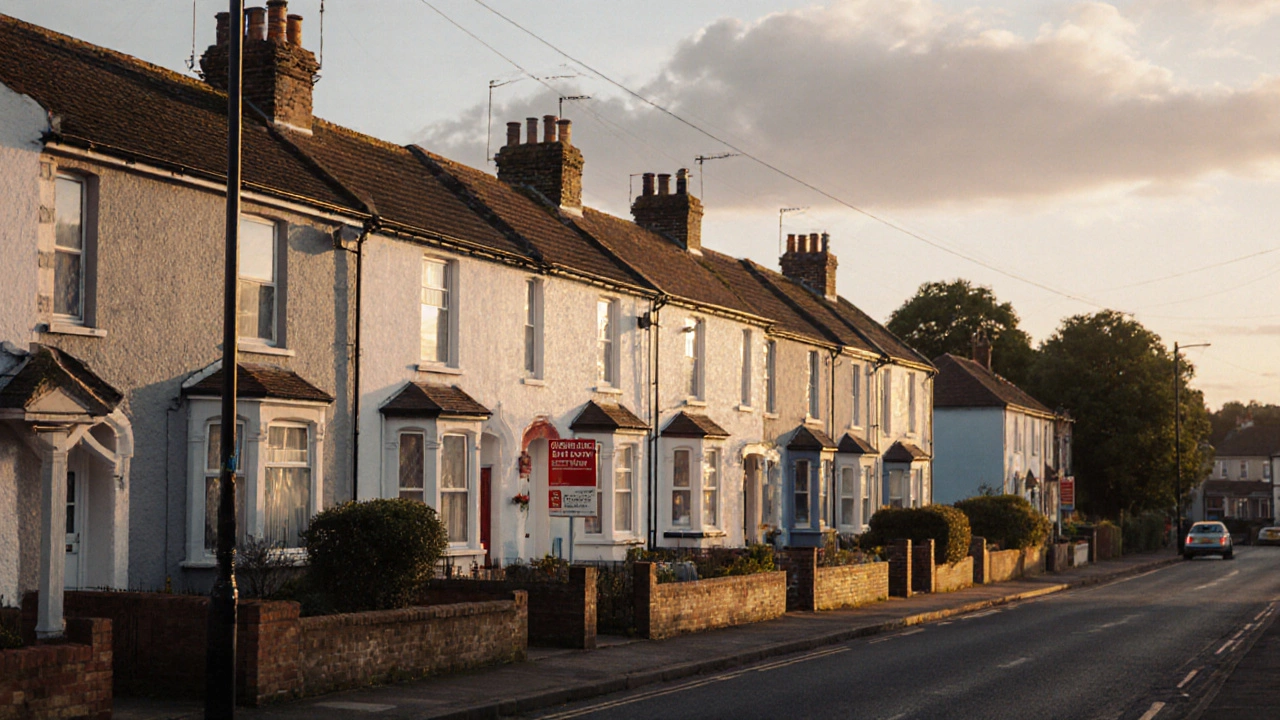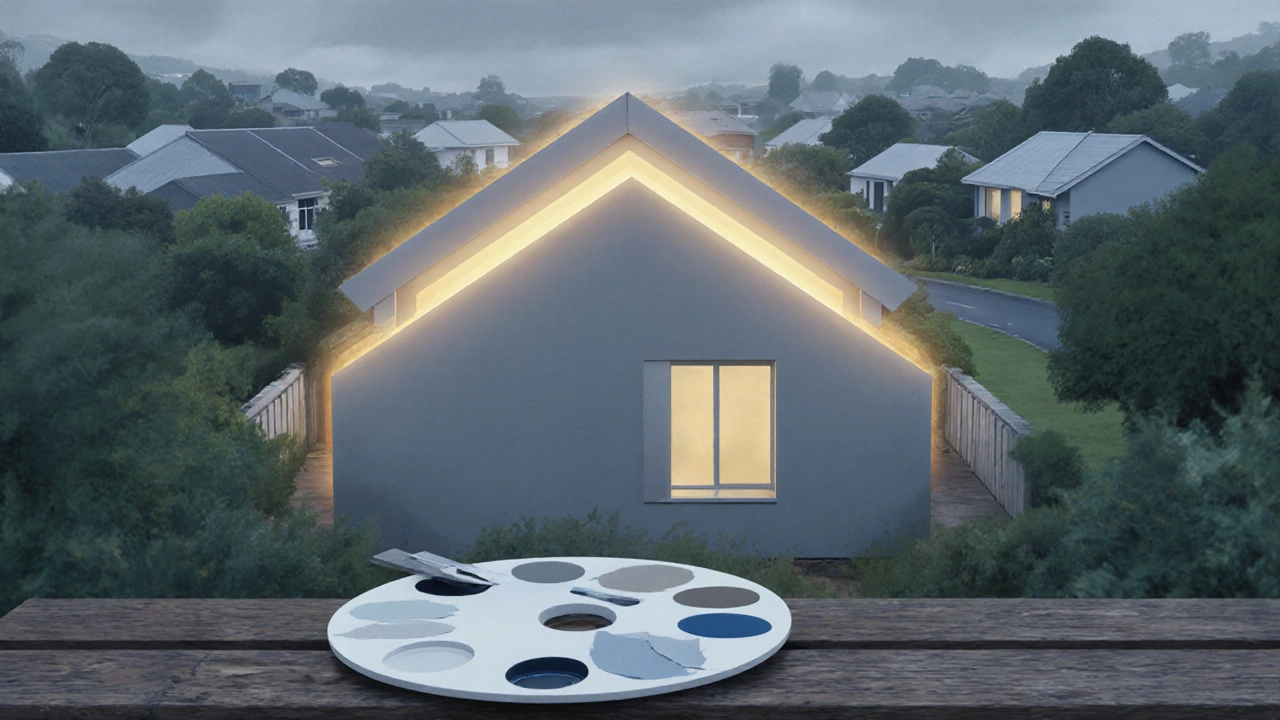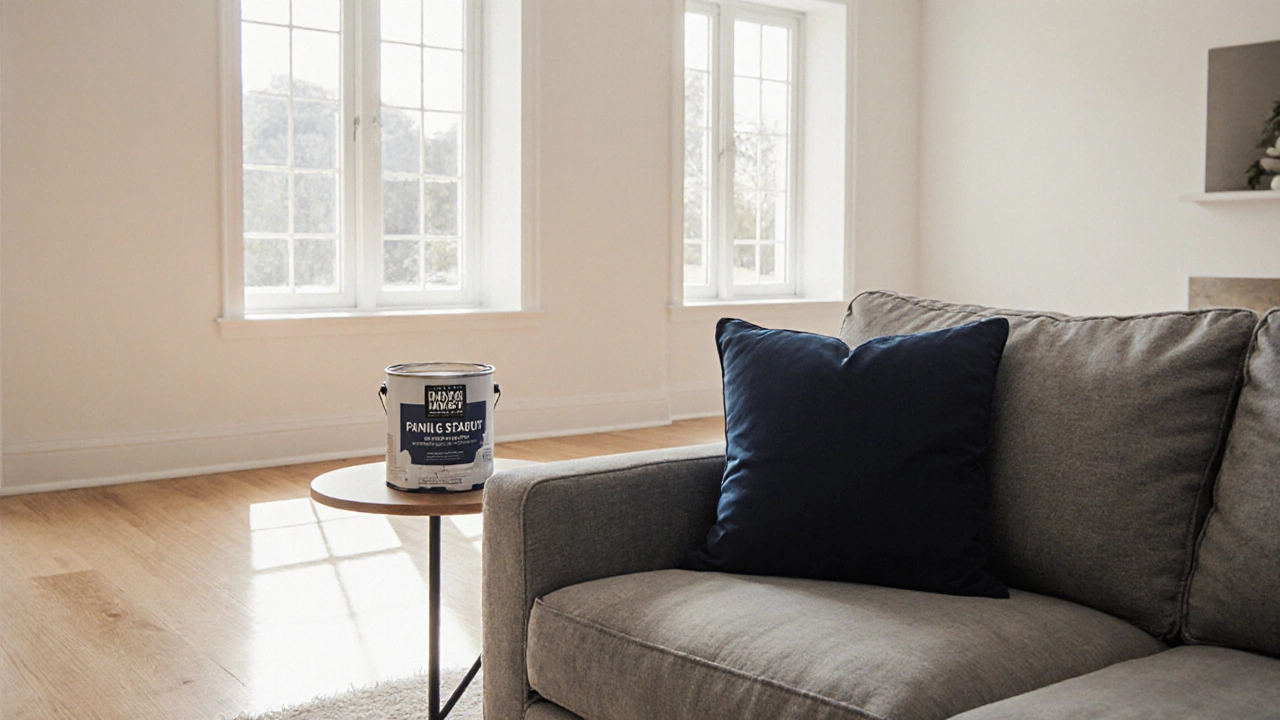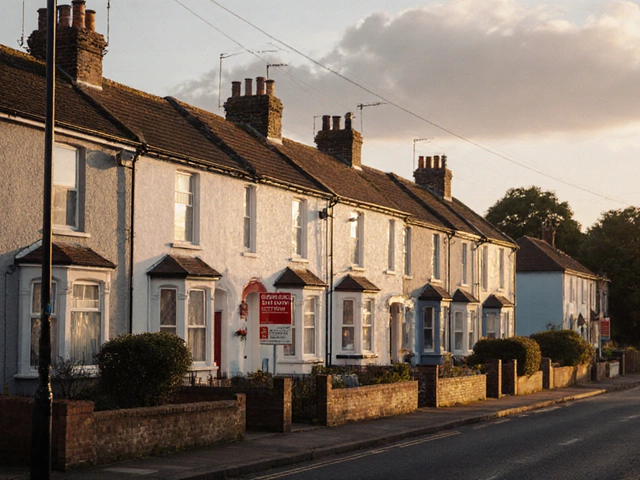Best Paint Colors to Increase Home Value

Ever walked by a house and felt an instant pull because of its hue? That gut reaction isn’t just aesthetic - it’s a real driver of how much buyers are willing to pay. In this guide we’ll break down which exterior paint color actually adds value, why it works, and how to pick the right shade for your market.
Key Takeaways
- Neutral tones like greys, whites, and muted blues deliver the highest average ROI (3‑5%).
- Bold accent colors can boost appeal in specific neighborhoods but risk lower offers if they clash with local norms.
- Regional climate and lighting influence how a color appears, so test patches at different times of day.
- Interior paint choices matter most in high‑traffic rooms; soft neutrals sell faster.
- Always consider the home resale value is the price a property fetches on the market after a sale, reflecting both market conditions and buyer perception when budgeting for paint.
Why Color Impacts Perceived Value
Buyers form an opinion in the first 30 seconds of a showing. That snap judgment is largely based on curb appeal is the visual attractiveness of a property from the street, heavily influenced by landscaping, architecture, and paint color. A well‑chosen hue signals care, modernity, and maintenance, while an odd or faded shade hints at neglect.
Research from the National Association of Realtors (2023) shows homes with fresh, neutral exteriors sell 7% faster and can command up to 5% higher prices than comparable listings with dated colors. Color psychology also plays a role: blues evoke trust, greens suggest calm, and reds trigger excitement. Aligning these emotions with buyer expectations boosts the perceived value.
Top Exterior Paint Colors and Expected ROI
Below is a snapshot of the most profitable colors based on data from real‑estate panels in the US, UK, and New Zealand.
| Color | Typical ROI % | Best For | Regional Notes |
|---|---|---|---|
| Soft Gray | 4‑5% | Modern suburban homes | Works well in cloudy climates like Auckland. |
| Classic White | 3‑4% | Traditional, coastal properties | Reflects sunlight, ideal for sunny regions. |
| Muted Blue | 3‑4% | Family‑oriented neighborhoods | Calming in both warm and cool zones. |
| Warm Beige | 2‑3% | Rural and heritage homes | Blends with natural surroundings. |
| Deep Charcoal | 1‑2% | Luxury urban lofts | Requires complementary landscaping. |
| Accent Red (front door or shutters) | 1‑2% | Homes in historic districts | Use sparingly to avoid visual clash. |
These percentages are averages; actual gains depend on market timing, property size, and how well the color matches the surrounding homes.

Regional Considerations - What Works in Auckland and Beyond
New Zealand’s coastal climate means strong UV exposure and frequent rain. Light, reflective colors like soft gray or classic white help keep exteriors looking fresh longer. In Auckland’s leafy suburbs, a muted blue can complement the natural greenery without overwhelming the streetscape.
In drier, hotter climates (e.g., Phoenix), lighter shades reduce heat absorption, cutting cooling costs and making the home more attractive to buyers. Conversely, in cooler, overcast regions (e.g., Seattle), warm neutrals can add visual warmth and counter the gloomy sky.
When choosing a hue, check local homeowners’ association (HOA) guidelines. Some neighborhoods mandate a palette; deviating can lead to rejection or resale hurdles.
Interior Paint Colors That Influence Sale Price
While the exterior draws the buyer in, the interior seals the deal. Paint in high‑traffic rooms-living rooms, kitchens, master bedrooms-has the biggest impact on perceived value.
Data from a 2024 Zillow study shows:
- Living rooms painted in light greys or warm whites sell for up to 2% more.
- Bathrooms with crisp aqua or soft teal can boost buyer confidence in freshness, adding about 1%.
- Bold accent walls (e.g., navy in a study) are a neutral net-some buyers love them, others see them as a cost of repainting.
For interiors, color psychology is the study of how hues affect human behavior and emotions, influencing buyer comfort and decision‑making matters. Soft, neutral tones create a blank canvas that lets buyers envision their own furniture.
How to Choose the Right Paint Color
- Assess the surrounding neighborhood. Walk the block and note the dominant palettes. Aligning with them usually yields the highest ROI.
- Consider lighting. Natural light changes color perception dramatically. Test strips on the wall, view them at sunrise, noon, and dusk.
- Factor in climate. Light colors reflect heat; dark colors absorb it. In hot zones, opt for lighter shades to improve energy efficiency.
- Use a reputable paint brand. Quality finishes last longer, reducing maintenance costs and keeping the home’s value intact.
- Seek professional advice. Color consultants or local real‑estate agents can provide data‑backed recommendations.
Remember, a fresh coat costs far less than a kitchen remodel, yet it can move the needle on price by several thousand dollars.

Common Pitfalls to Avoid
- Going too trendy. Neon greens or ultra‑bright yellows may impress now but often feel dated quickly.
- Ignoring the home’s architectural style. A Victorian cottage looks out of place in stark charcoal; stick to period‑appropriate hues.
- Skipping a primer. Skipping primer can lead to uneven coverage, making the house look poorly maintained.
- Overusing bold accents. One accent (door, shutters) is enough; too many draws the eye away from the overall harmony.
Bottom Line: Pick Smart, Paint Right
Choosing the right exterior paint color is a strategic decision that blends aesthetics, market data, and regional factors to boost a property’s resale price is more than a décor choice-it’s a financial move. Stick with neutral tones, respect local context, test for lighting, and you’ll likely see a 3‑5% bump in home resale value is the final sale price of a property after accounting for market trends and buyer perception. A modest investment of a few hundred dollars in paint can translate into thousands at closing.
Frequently Asked Questions
Which exterior color gives the highest ROI?
Soft gray and classic white consistently rank at the top, delivering an average ROI of 4‑5% according to multiple real‑estate studies.
Can a bold color ever increase my home’s value?
Bold hues work when used as accents-like a red front door-especially in historic districts where they add character without overwhelming the overall look.
How does lighting affect paint color perception?
Natural light shifts throughout the day. Test paint strips at sunrise, midday, and sunset to see how the hue changes with direction and weather.
Do interior colors matter as much as exterior colors?
Yes, especially in living rooms, kitchens, and master bedrooms. Neutral interior shades can add 1‑2% to sale price by making spaces feel larger and more inviting.
Should I hire a professional color consultant?
If you’re unsure about market trends or architectural style, a consultant can save money by avoiding costly repainting mistakes and ensuring the chosen hue aligns with buyer expectations.
